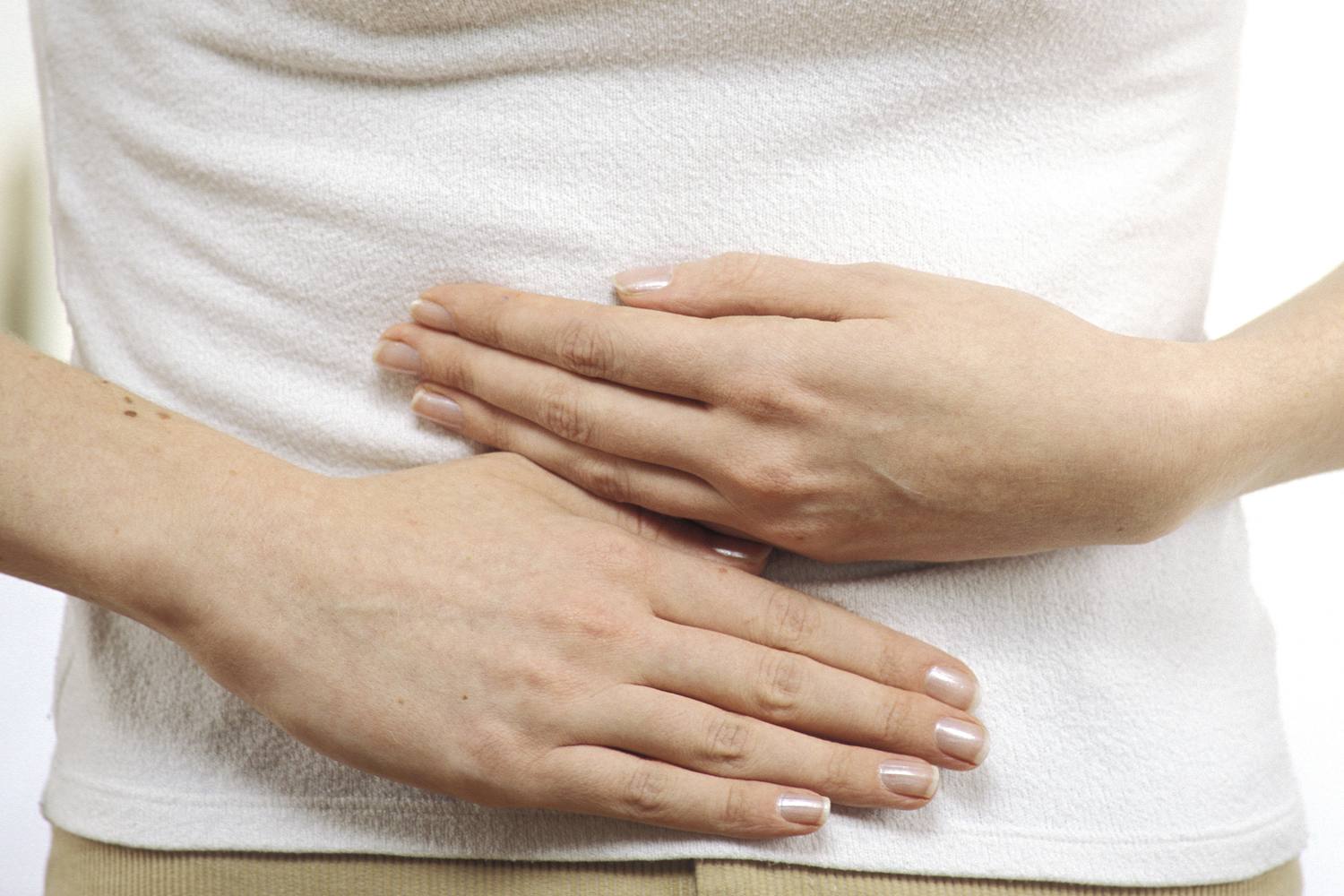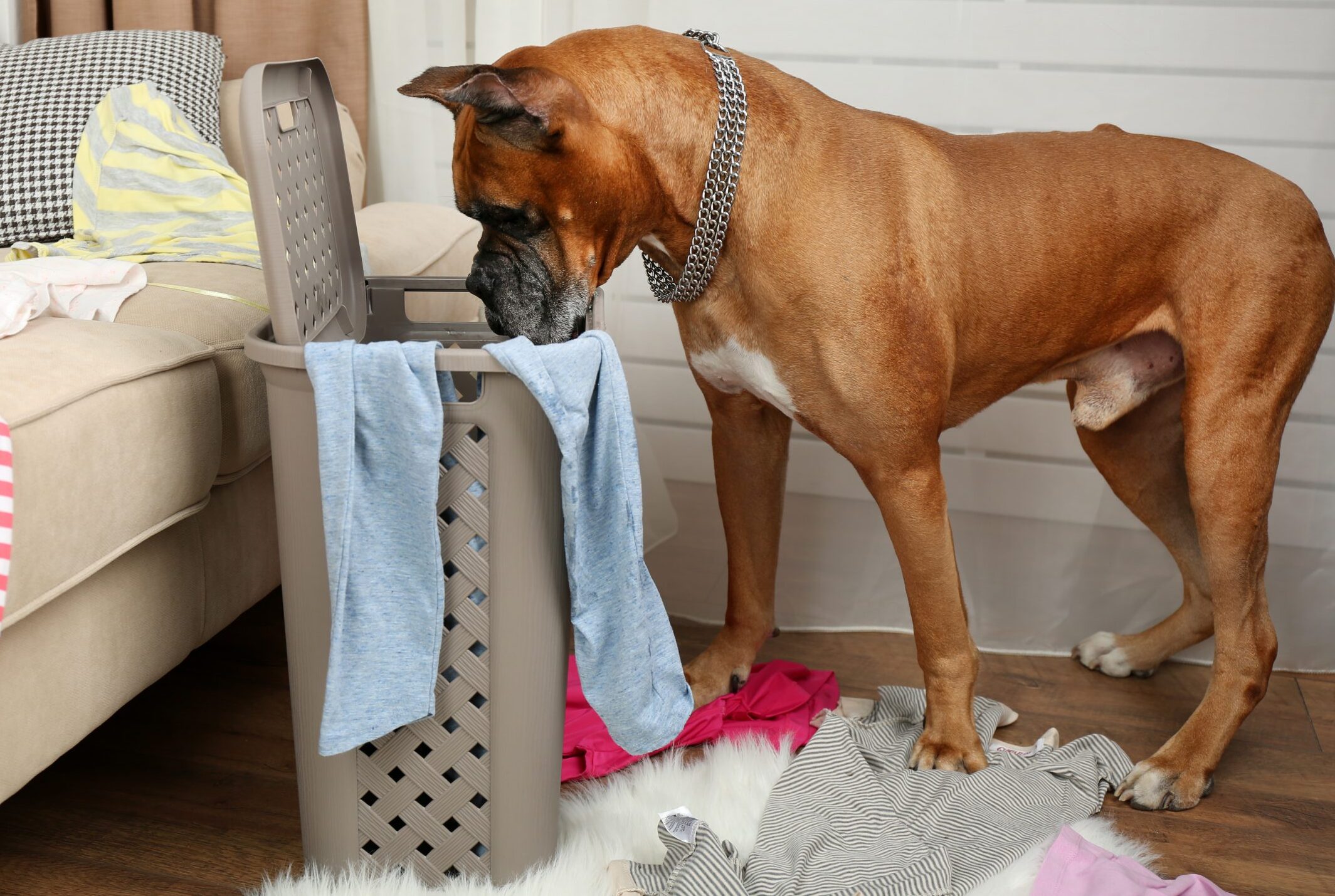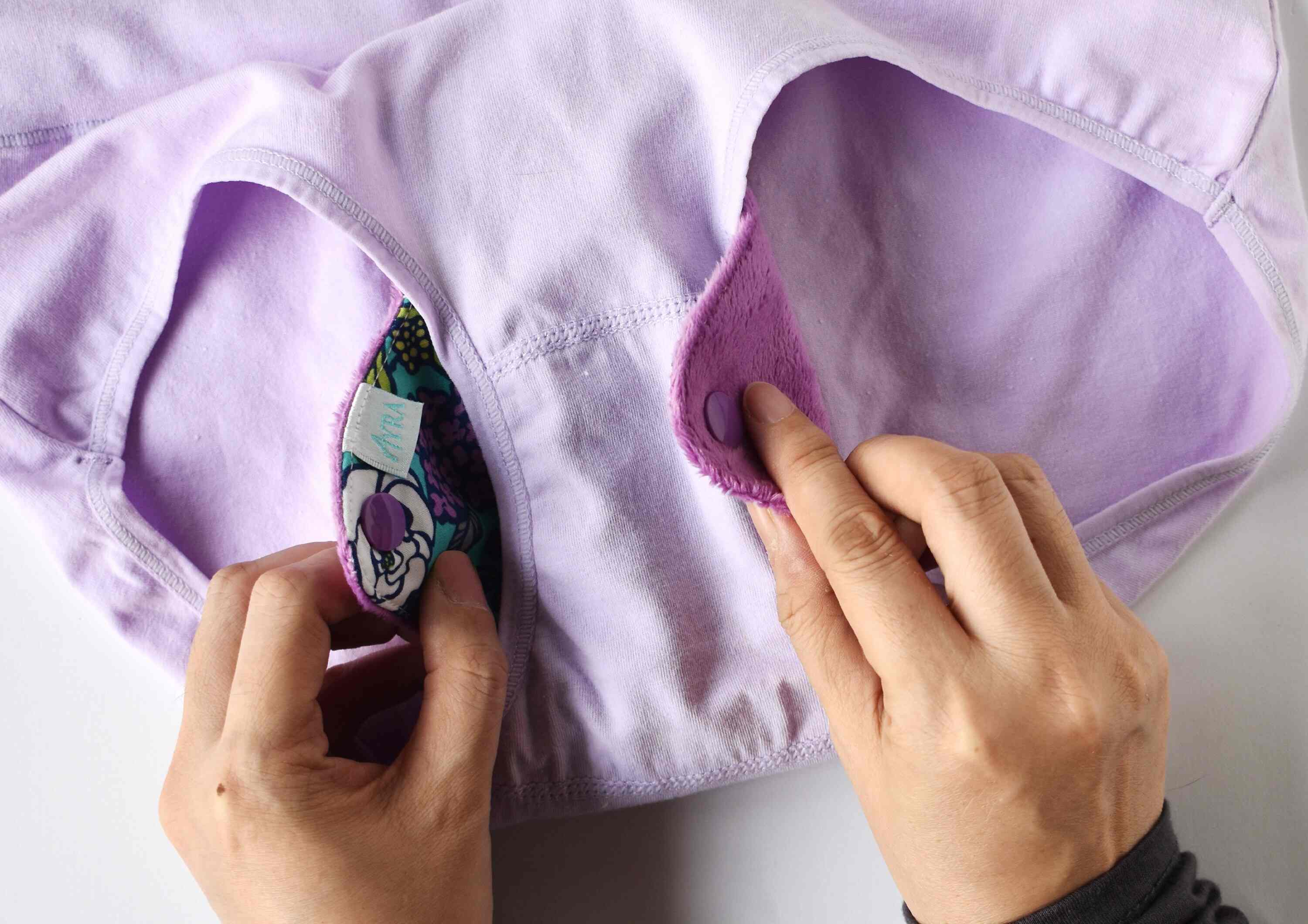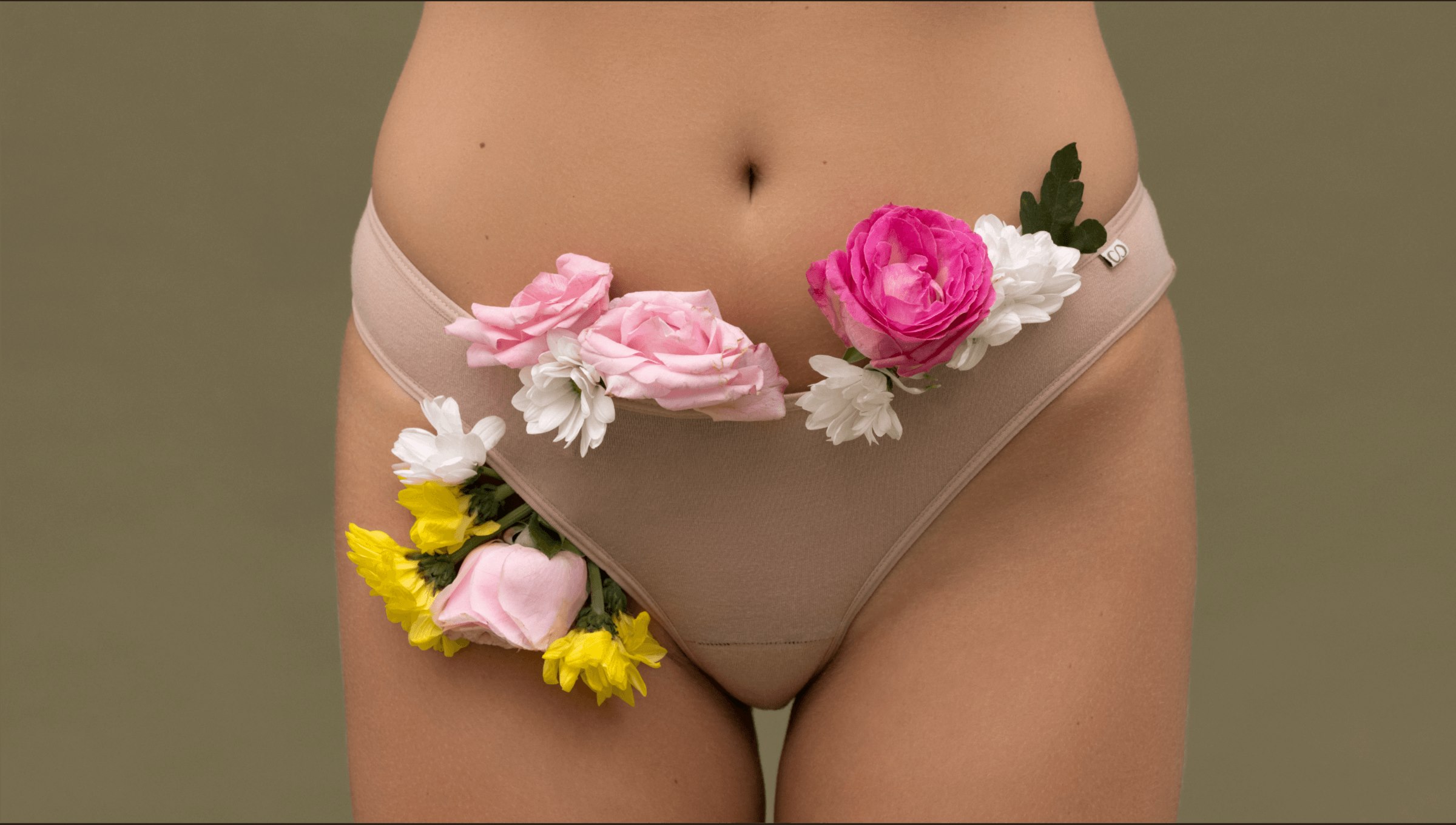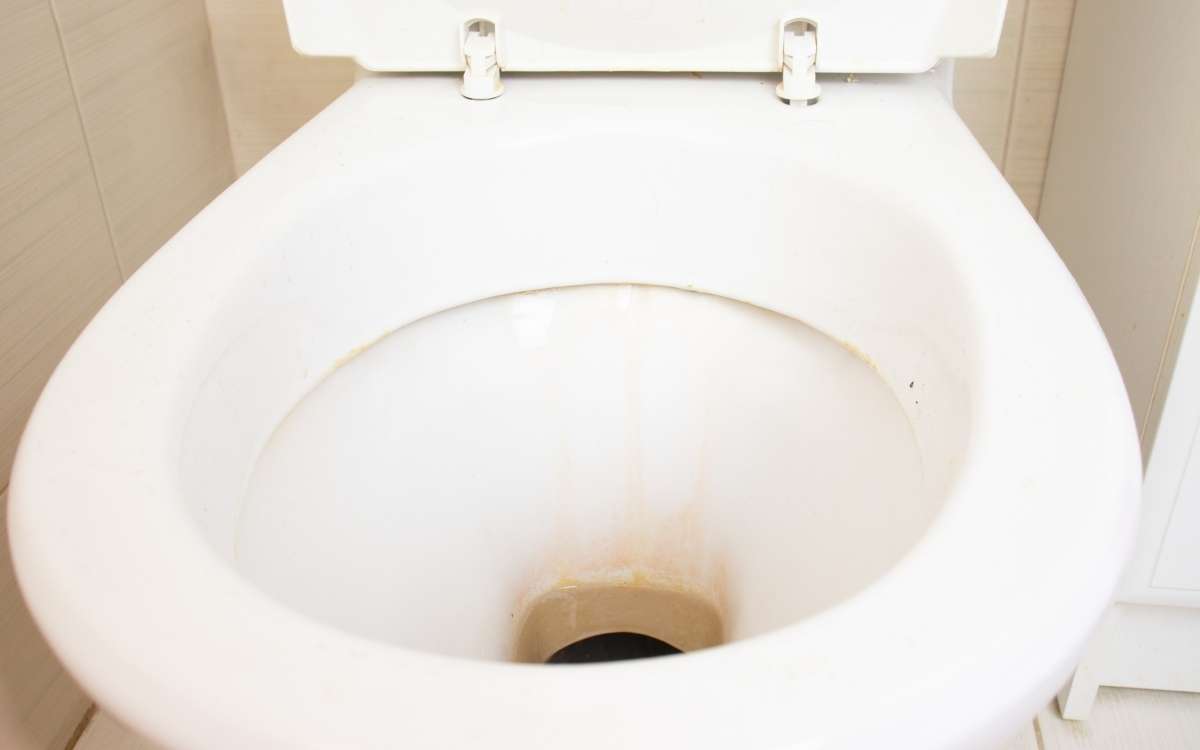Home>Women's Underwear>Bras>Why Does My Bra Hurt
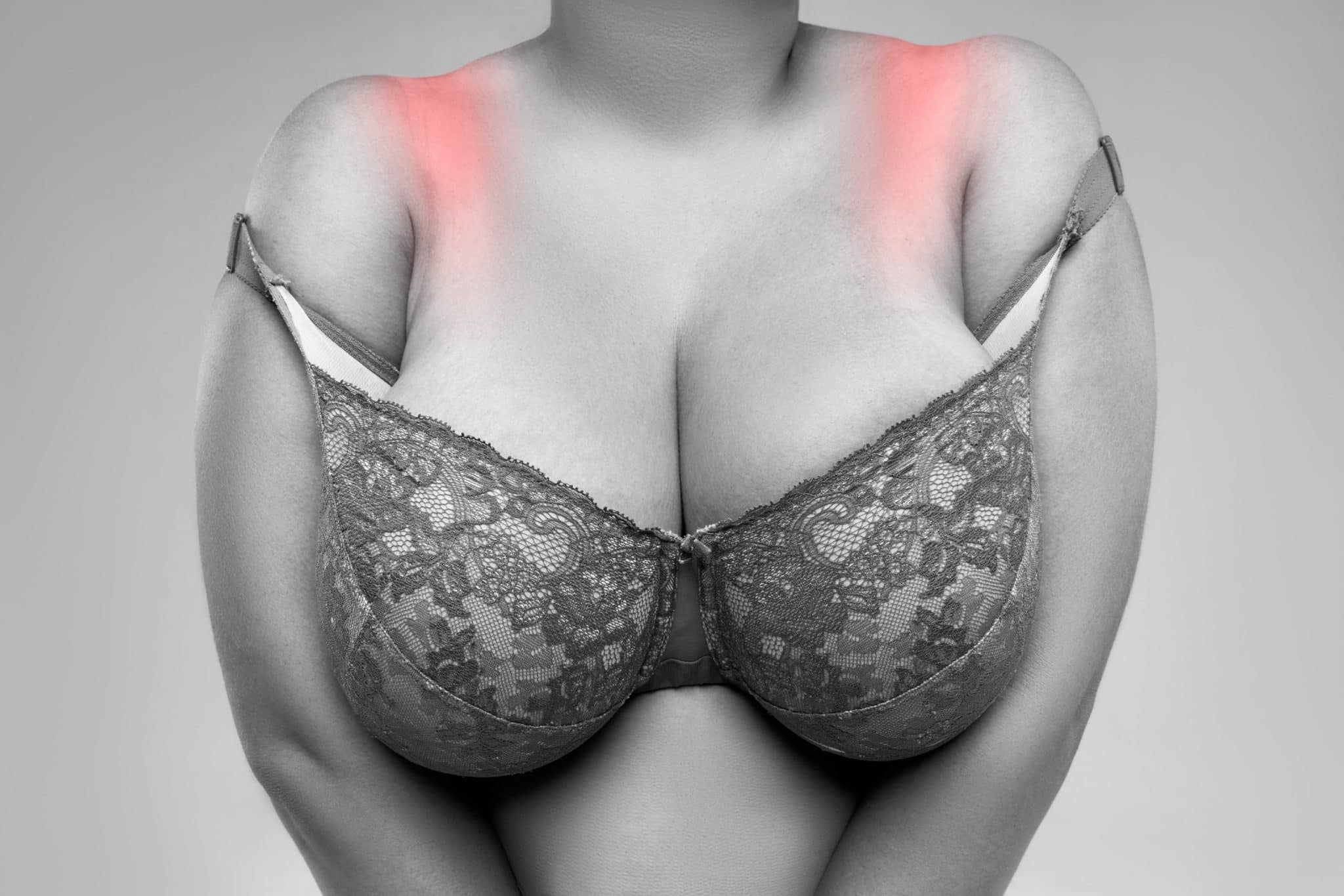

Bras
Why Does My Bra Hurt
Modified: August 5, 2023
Discover why your bras might be causing you discomfort and explore ways to relieve the pain. Find solutions for a more comfortable bra fit.
(Many of the links in this article redirect to a specific reviewed product. Your purchase of these products through affiliate links helps to generate commission for Under-tec.com, at no extra cost. Learn more)
Table of Contents
- Introduction
- Understanding Bra Pain
- Common Causes of Bra Pain
- Ill-Fitting Bra
- Incorrect Bra Size
- Wrong Bra Style
- Underwire Issues
- Narrow Bra Straps
- Tight Bra Band
- Physical Activity and Bra Discomfort
- Pregnancy and Bra Pain
- Medical Conditions and Bra Discomfort
- Tips to Relieve Bra Pain
- Finding the Right Bra
- Seeking Medical Advice
- Conclusion
Introduction
Have you ever experienced discomfort or pain while wearing a bra? You’re not alone. Many women struggle with this issue on a daily basis, and it can greatly affect their overall well-being. Understanding why your bra hurts is the first step towards finding a solution and ensuring your comfort throughout the day.
Bra pain can manifest in various ways, including shoulder pain, back pain, red marks, or even headaches. It can be caused by a variety of factors, such as an ill-fitting bra, incorrect bra size, wrong bra style, underwire issues, narrow bra straps, tight bra bands, or even engaging in physical activity while wearing the wrong type of bra. Additionally, certain medical conditions or pregnancy can also contribute to bra discomfort.
While bra pain may seem like a minor issue, it can have a significant impact on your day-to-day life. Discomfort in the chest area can lead to reduced physical activity, poor posture, and even decreased self-confidence. Therefore, it is crucial to address this issue and find effective ways to alleviate bra pain.
This article delves into the common causes of bra pain and provides useful tips to help you find relief. From understanding the importance of finding the right bra to seeking medical advice when necessary, we will explore various strategies to ensure your bra is a source of comfort rather than discomfort.
So, if you’ve ever wondered why your bra is causing you pain, keep reading to discover the underlying reasons and find actionable solutions to enhance your overall bra-wearing experience.
Understanding Bra Pain
Before delving into the causes and solutions of bra pain, it’s essential to have a clear understanding of what exactly bra pain is and how it affects your body. Bra pain refers to any discomfort, irritation, or pain experienced in the chest, shoulders, or back area while wearing a bra.
Wearing a bra that doesn’t fit properly or is not suited to your body type can lead to various forms of discomfort. The strain caused by an ill-fitting bra can result in muscle tension, restricted blood flow, and even nerve compression. This can manifest as pain, red marks on your skin, or even headaches.
It’s important to note that bra pain is not something that should be ignored or dismissed as trivial. The discomfort can be both physical and psychological, affecting your daily activities and overall well-being. Chronic bra pain can lead to reduced physical activity, poor posture, and even negative body image.
Understanding the specific areas where bra pain occurs can help identify the root causes. Shoulder pain can indicate that your bra straps are too narrow or digging into your skin. Back pain may be a result of an incorrect bra size or an ill-fitting band that doesn’t provide adequate support. Red marks on your skin are often a sign of a bra that is too tight or leaving indentations on your body.
By understanding the underlying mechanisms of bra pain, you can take the necessary steps to address and alleviate the discomfort. In the following sections, we will explore the common causes of bra pain and provide practical solutions to ensure your bra is not a source of discomfort but rather a supportive and comfortable garment.
Common Causes of Bra Pain
Bra pain can be attributed to several common causes. Understanding these causes will help you identify the source of your discomfort and take appropriate measures to alleviate the pain.
1. Ill-Fitting Bra: One of the most common causes of bra pain is wearing an ill-fitting bra. If your bra doesn’t fit properly, it can cause discomfort in various ways. It may be too tight, resulting in pressure and restricted movement, or too loose, leading to inadequate support.
2. Incorrect Bra Size: Wearing the wrong bra size can cause significant discomfort. Many women wear bras that are too small or too big for them without realizing it. This can lead to issues such as underwire digging into the skin, spillage, or lack of support.
3. Wrong Bra Style: Different bra styles are designed for various purposes and body shapes. Wearing a bra style that is not suitable for your body type can cause discomfort. For example, wearing a push-up bra may feel uncomfortable if you have larger breasts, while a sports bra may lack the necessary support for high-intensity activities.
4. Underwire Issues: Underwire bras can provide excellent support, but if the underwire is not properly shaped or positioned, it can cause discomfort. The underwire may poke or press against the breast tissue, leading to pain or irritation.
5. Narrow Bra Straps: Bra straps that are too narrow may dig into your shoulders, causing discomfort and even leaving marks on your skin. This is especially true for women with larger breasts who need more support from their bra straps.
6. Tight Bra Band: A bra band that is too tight can cause significant pain and discomfort. It may press into your skin, leaving red marks and restricting your movements. On the other hand, a loose bra band won’t provide adequate support and may result in sagging breasts.
Identifying the specific cause of your bra pain is crucial in finding a solution. In the next sections, we will explore practical tips to help you alleviate the discomfort and find a bra that offers the perfect fit and support.
Ill-Fitting Bra
One of the most common causes of bra pain is wearing an ill-fitting bra. When your bra doesn’t fit properly, it can lead to discomfort and even pain. It’s important to understand the signs of an ill-fitting bra and how to remedy the situation.
There are several indicators that your bra may not be fitting correctly. The first and most obvious sign is when the bra feels too tight or too loose. If you experience any sort of pressure or constriction in the chest or back area, the bra is likely too tight. On the other hand, a bra that slides up, leaves gaps, or fails to provide adequate support is likely too loose.
Another sign of an ill-fitting bra is when the underwire digs into your skin. The underwire should sit comfortably around the breast tissue, encapsulating and supporting it. If you feel any poking or discomfort, it’s a clear sign that the underwire is not in the right position or shape for your body.
Spillage is another common issue with ill-fitting bras. If your breasts are overflowing from the cups or creating a bulge around the armpit area, it means the bra is too small and not providing sufficient coverage.
So, what can you do to address the issue of an ill-fitting bra? The first step is to get measured by a professional bra fitter to determine your correct size. A proper fitting will ensure that the bra provides the right amount of support while remaining comfortable throughout the day.
Additionally, consider purchasing bras with adjustable straps and multiple hook-and-eye closures. This will allow you to customize the fit according to your comfort level and make adjustments as needed.
It’s also important to remember that bra sizes can vary between brands, so don’t be afraid to try on different brands and styles to find the perfect fit. Every body is unique, and finding the right bra will ultimately depend on your individual shape and preferences.
By addressing the issue of an ill-fitting bra, you can significantly reduce discomfort and pain in the chest, back, and shoulder areas. Don’t underestimate the impact of a properly fitting bra – it can make all the difference in your day-to-day comfort and overall well-being.
Incorrect Bra Size
Wearing the wrong bra size is a common cause of discomfort and pain. Many women unknowingly wear bras that don’t provide the proper fit and support they need. It’s essential to understand the importance of wearing the correct bra size and how to identify if you’re wearing the wrong size.
One of the key indicators that you’re wearing the incorrect bra size is when the band feels too tight or too loose. The band should fit snugly around your torso, providing support without digging into your skin or riding up. If the band leaves red marks or slides up your back, it’s a sign that you may be wearing the wrong size.
Another sign of an incorrect bra size is when the cups don’t fully encase your breasts. If you notice any spillage or gaps between your breasts and the cups, it means the bra is too small or too big for you. The cups should comfortably hold and support your breasts without any overflow or empty spaces.
Strap and underwire issues can also indicate an incorrect bra size. If the straps are digging into your shoulders or falling off, it may be a sign that the band is not providing enough support, causing the straps to bear too much weight. Similarly, if the underwire is poking or pressing against your breast tissue, it’s a clear indication that the bra size is wrong for your body shape.
To ensure you’re wearing the correct bra size, it’s recommended to get professionally measured by a bra fit expert. They will take accurate measurements to determine your band size and cup size, considering factors such as shape, fullness, and placement of your breasts.
Once you know your correct size, don’t be afraid to try on different bra styles to find the best fit for your body shape and comfort. Remember that sizes can vary between brands, so it’s important to try on bras and evaluate the fit on an individual basis.
Wearing the correct bra size is essential for your comfort and overall well-being. Not only will it alleviate any discomfort or pain, but it will also provide the necessary support for your breasts, improve your posture, and enhance your confidence.
By addressing the issue of wearing an incorrect bra size, you can ensure a comfortable and supportive fit, reducing the risk of discomfort and pain associated with ill-fitting bras.
Wrong Bra Style
Choosing the wrong bra style can also contribute to discomfort and pain. Each bra style is designed to provide specific support and coverage depending on the individual’s body type and the intended purpose of the bra. Wearing the wrong bra style can lead to discomfort and a lack of support.
One common mistake is wearing a push-up bra when it may not be suitable for your body shape. Push-up bras are designed to lift and enhance the appearance of the breasts. However, if you have larger breasts, wearing a push-up bra may lead to discomfort as it puts extra pressure on your shoulders and could potentially squeeze your breasts in an uncomfortable way. In this case, opting for a full-coverage or minimizer bra may provide better comfort and support.
On the other hand, wearing a sports bra for everyday activities or a low-impact bra for high-intensity workouts may cause significant discomfort. Sports bras are specifically designed to minimize breast movement during physical activities, providing the necessary support. Wearing a regular bra during exercise may result in breast pain and discomfort due to inadequate support and increased friction. Likewise, wearing a sports bra for everyday wear may not provide the support and shaping needed for your breasts.
Maternity bras are another example of specialized bra styles. Both during and after pregnancy, a woman’s breasts undergo changes in size and shape. It is essential to wear a maternity bra that provides sufficient support and accommodates these changes. Failure to do so may result in discomfort and pain due to inadequate support for the changing breast tissue.
Choosing the right bra style for your body and activity level is crucial for your comfort and support. Consider your needs, body shape, and the purpose of the bra when making your selection. Take the time to explore different styles and experiment with what works best for you.
Remember, your bra style should provide the necessary support, coverage, and comfort to keep you feeling confident and secure throughout the day. Don’t hesitate to seek advice from lingerie experts or do your own research to find the appropriate bra style for your individual needs.
By selecting the right bra style, you can ensure optimal comfort and support, reducing the risk of discomfort and pain often associated with wearing the wrong type of bra.
Underwire Issues
Underwire bras are a popular choice for many women as they provide extra support and lift. However, underwire issues can contribute to discomfort and pain if not properly addressed. Understanding common underwire problems and how to resolve them can make a significant difference in your bra-wearing experience.
One common issue with underwire bras is when the underwire pokes or digs into the breast tissue or the ribcage. This can cause irritation, redness, and even bruising. The underwire may be too rigid or incorrectly positioned, putting pressure on sensitive areas. If you experience discomfort in these areas, it’s important to address the underwire issue promptly.
Firstly, it’s crucial to ensure you’re wearing the correct bra size. An ill-fitting bra can exacerbate underwire issues, leading to discomfort. Getting professionally measured and fitted for bras can help ensure the underwire is positioned correctly and comfortably.
If the underwire is still causing discomfort even with the correct size, you can try different bra brands and styles that offer flexibility or softer underwires. Some bras have underwire channels or padding to minimize direct contact between the underwire and your skin. Additionally, bras with wider underwires may distribute the pressure more evenly, reducing discomfort.
It may also be helpful to adjust the position of the underwire by gently adjusting it along your breast crease. Ensure that the underwire sits flat against your ribcage, encompassing the breast tissue without digging into it.
Lastly, if underwire bras continue to cause discomfort, consider trying non-underwire alternatives such as wireless bras or bralettes. These options provide support without the rigid underwire, eliminating the associated issues. However, it’s important to note that wireless bras may not offer the same level of support and lift as underwire bras, especially for those with larger breasts.
Addressing underwire issues is crucial for your comfort and overall well-being. If you experience persistent pain or discomfort, it may be advisable to consult with a bra fit expert who can provide personalized recommendations and solutions tailored to your specific needs.
Remember, finding the right underwire fit and style is key to ensuring optimal comfort and support. By addressing underwire issues, you can enjoy the benefits of underwire bras without the associated discomfort and pain.
Narrow Bra Straps
Bra straps play a vital role in providing support and distributing the weight of your breasts. When bra straps are too narrow, they can dig into your shoulders, causing discomfort, pain, and even leaving marks on your skin. Understanding the issues associated with narrow bra straps and finding ways to alleviate this discomfort is key to a more comfortable bra-wearing experience.
Narrow bra straps may apply excessive pressure to a smaller area of your shoulders, resulting in pain and discomfort. This is especially true for women with larger breasts, as the weight distribution becomes uneven and places even more strain on the narrower straps.
Fortunately, there are several solutions to dealing with narrow bra straps. One option is to look for bras with wider straps. Wider straps distribute the weight more evenly across your shoulders, reducing the pressure and discomfort. Many bra manufacturers offer bras with adjustable and convertible straps, allowing you to find the right width and fit for your comfort.
If you have a bra with fixed narrow straps that are causing discomfort, consider using bra strap cushions or silicone shoulder pads. These accessories provide additional padding and cushioning, alleviating the pressure on your shoulders. They can be easily attached to your bra straps to provide added comfort throughout the day.
Another solution is to opt for bras with reinforced or padded straps. These bras are specifically designed to provide extra support and cushioning. The additional padding helps to distribute the weight evenly and reduce the strain on narrow straps, enhancing your comfort.
When adjusting your bra straps, ensure they are not too tight or too loose. Straps that are too tight can dig into your shoulders and leave marks, while loose straps may not provide the necessary support. Experiment with different strap lengths to find the ideal tension and comfort level for your individual needs.
Remember, finding the right bra strap width is essential for your comfort and well-being. Don’t hesitate to try different bra styles and accessories to find the best solution for your body shape and personal preferences. By addressing narrow bra strap issues, you can significantly reduce discomfort and pain, allowing you to confidently wear your bra throughout the day.
Tight Bra Band
A tight bra band is a common cause of discomfort and pain for many women. When the bra band is too tight, it can dig into your skin, leave red marks, and restrict your movements. Understanding the issues associated with a tight bra band and finding ways to alleviate this discomfort is essential for a more comfortable bra-wearing experience.
A tight bra band can lead to various problems. It can restrict the flow of blood and lymphatic fluid, causing discomfort and potentially impacting breast health. It may also lead to chafing, skin irritation, and even difficulty in breathing. Additionally, a tight bra band can compress and flatten the breast tissue, resulting in an unflattering shape and inadequate support.
If you find that your bra band feels too tight, consider revisiting your bra size. Getting professionally fitted and measured is crucial to ensure you’re wearing the correct band size. A properly fitting bra band should feel snug but not constrictive. It should rest parallel to the ground, with enough room to slide two fingers comfortably underneath.
If you have the correct band size but still experience tightness, it may be helpful to explore bra styles with adjustable bands. Bras that offer multiple hook-and-eye closures provide the flexibility to adjust the band’s tightness according to your comfort. Starting with the loosest setting and gradually adjusting can help you find the optimal level of support without sacrificing comfort.
Choosing bras made from stretchy materials or with wider bands can also help alleviate the tightness. These bras offer a more forgiving and comfortable fit, allowing for better movement and reducing the pressure on your skin.
It’s important to note that as bras age, the elasticity of the band can diminish, causing it to feel tighter. Regularly assessing the condition of your bras and replacing them when necessary will ensure that you’re wearing supportive and comfortable undergarments.
Remember, finding the right bra band fit is essential for your comfort and overall well-being. Don’t hesitate to seek advice from lingerie experts or try different brands and styles to find the perfect fit for your body shape and preference. By addressing the issue of a tight bra band, you can alleviate discomfort and pain, allowing you to wear your bra with confidence and ease.
Physical Activity and Bra Discomfort
Engaging in physical activity while wearing the wrong type of bra can lead to significant discomfort. The breasts undergo movement during exercise, and without proper support, this can result in pain and even damage to the breast tissue. Understanding the importance of choosing a sports bra or appropriate athletic wear can help alleviate bra-related discomfort during physical activity.
Regular bras are not designed to provide the necessary support and stability required during exercise. When you engage in activities such as running, jumping, or high-intensity workouts, your breasts move in multiple directions. Without proper support, this movement can strain the ligaments and cause pain.
A sports bra is specifically designed to minimize breast movement and provide optimal support during physical activity. It offers more coverage, wider and adjustable straps, and a firmer band to reduce bouncing and provide stability. By wearing a sports bra, you can minimize discomfort and potential damage to the breast tissue.
When choosing a sports bra, consider the level of impact during your activities. Low-impact sports bras are suitable for activities such as yoga or walking, while high-impact sports bras are ideal for running, HIIT workouts, or intense cardio exercises. Select a sports bra that fits you well and provides the appropriate level of support for your chosen activity.
Additionally, wearing moisture-wicking fabrics can help alleviate discomfort during physical activity. These fabrics are designed to absorb sweat and keep you cool and dry, reducing chafing and irritation that may occur due to prolonged moisture.
It’s also important to note that sports bras, like regular bras, can lose their effectiveness over time. The elastic may lose its stretch, and the support may diminish. Regularly assess the condition of your sports bras and replace them as needed to maintain the proper level of support and comfort.
By choosing the right type of bra for physical activity and ensuring that it fits properly, you can minimize discomfort and pain during exercise. Taking care of your breasts by wearing a suitable sports bra will allow you to fully enjoy and maximize the benefits of your workouts without the added discomfort of an ill-fitting bra.
Pregnancy and Bra Pain
Pregnancy is a time of significant changes in a woman’s body, and these changes often extend to the breasts. As the breasts grow and prepare for breastfeeding, many pregnant women experience discomfort and pain. Understanding the impact of pregnancy on bra fit and finding appropriate maternity bras can help alleviate bra-related discomfort during this period.
During pregnancy, hormonal changes cause the breasts to increase in size and become more sensitive. This can lead to discomfort, tenderness, and even pain. As the breasts grow, the regular bras that once provided a comfortable fit may no longer be suitable.
Maternity bras are specially designed to accommodate the changes in the breast size and shape during pregnancy. They offer features like wider straps, wider underbands, and adjustable closures to provide optimal support and comfort. Maternity bras are made from stretchier materials to accommodate the growth of the breasts and minimize discomfort.
It’s important to prioritize comfort and support when choosing maternity bras. Look for bras made from soft and breathable fabrics that will keep you comfortable throughout the day. Opt for styles with wider shoulder straps to distribute the weight of the breasts evenly, reducing strain on your shoulders.
During pregnancy, it’s also common for the ribcage to expand to accommodate the growing baby. This can cause the bra band to feel tighter and more constricting. Consider wearing bras with wider and more adjustable bra bands to accommodate these changes and provide better support.
If you plan to breastfeed, it’s beneficial to invest in nursing bras during pregnancy. Nursing bras have additional features like drop-down cups or clips that allow for easy access during breastfeeding. These bras provide convenience and comfort for nursing moms while offering the necessary support.
Regularly assessing your bra size during pregnancy is essential since breast size can change throughout each trimester. Get professionally fitted if possible, to ensure that you are wearing the correct size and that your bras provide the necessary support.
By wearing appropriately fitting maternity bras during pregnancy, you can minimize discomfort and pain associated with changes in breast size and sensitivity. Prioritizing comfort and support will allow you to focus on the many joys of pregnancy and ensure your overall well-being during this special time.
Medical Conditions and Bra Discomfort
Sometimes, bra discomfort and pain can be attributed to underlying medical conditions. Certain conditions can affect the sensitivity, shape, or size of your breasts, making it challenging to find a comfortable and supportive bra. Understanding how medical conditions can contribute to bra discomfort and seeking appropriate solutions can help alleviate the pain.
One common condition that can cause bra discomfort is mastalgia, or breast pain. Mastalgia can be cyclic, occurring in relation to hormonal changes, or non-cyclic, unrelated to the menstrual cycle. This breast pain can range from mild to severe and can be accompanied by tenderness or swelling. Wearing a properly fitted bra with good support and cushioning can help alleviate the discomfort in such cases.
Fibrocystic breast changes are another condition that can lead to bra discomfort. This condition causes the breasts to feel lumpy or nodular due to the presence of cysts or fibrous tissue. These changes can be associated with breast pain and tenderness. Choosing bras made from soft, non-irritating fabrics and avoiding underwires can help reduce discomfort in such cases.
Breast infections, such as mastitis or abscesses, can also cause significant bra pain. These conditions are often accompanied by redness, swelling, and throbbing pain. Wearing supportive and breathable bras, along with receiving appropriate medical treatment, can help manage the discomfort associated with breast infections.
Breast surgery, including breast augmentation, reduction, or reconstruction, can also lead to specific bra-related challenges. Post-surgical bras or compression garments may be required initially to aid in healing and reduce swelling. As the healing progresses, it’s crucial to find bras that provide sufficient support and comfort without placing undue pressure on the surgical areas.
Other medical conditions, such as skin conditions like dermatitis or eczema, can also contribute to bra discomfort. In these cases, choosing bras made from soft, breathable fabrics without irritating seams or tags can help minimize discomfort and alleviate potential skin irritation.
If you experience persistent or severe bra discomfort due to a medical condition, it’s important to seek guidance from a healthcare professional or specialist. They can provide personalized advice and recommend appropriate treatments or solutions tailored to address your specific needs.
By understanding how medical conditions can affect bra comfort and seeking appropriate solutions, you can minimize discomfort and pain, ensuring a more pleasant bra-wearing experience even when dealing with underlying health conditions.
Tips to Relieve Bra Pain
Dealing with bra pain can be frustrating and uncomfortable. Fortunately, there are several tips and strategies you can follow to help relieve bra pain and improve your overall comfort. These tips can be especially beneficial if you’re experiencing common issues like discomfort from an ill-fitting bra, tight bra bands, or narrow bra straps.
1. Get professionally fitted: Start by getting professionally measured and fitted for a bra. A proper fitting can ensure that you’re wearing the correct bra size and style, alleviating many common causes of bra pain.
2. Choose the right bra style: Select a bra style that suits your body type and activities. Consider different styles like full-coverage, plunge, or wireless bras to find the best fit and support for your needs.
3. Opt for supportive materials: Look for bras made from supportive and breathable materials, such as cotton or moisture-wicking fabrics. These materials can help keep you comfortable and minimize irritation.
4. Adjust bra straps: Ensure that your bra straps are adjusted properly, neither too tight nor too loose. This will help distribute the weight of your breasts evenly and prevent unnecessary strain on your shoulders.
5. Wear a bra band extender: If your bra band feels tight, consider using a bra band extender to provide a bit of extra room and alleviate discomfort. This can be especially helpful during pregnancy or when experiencing fluctuating bra band sizes.
6. Take breaks from underwire bras: If underwire bras are causing discomfort, consider taking breaks from wearing them. Opt for wireless bras or bralettes to give your breasts a break from the rigid underwire.
7. Engage in bra-free time: Give yourself some bra-free time whenever possible, especially at home or during restful periods. This allows your body to relax and recover from the potential discomfort of wearing a bra.
8. Consider bra inserts or pads: Bra inserts or pads can provide additional cushioning and support, helping to relieve discomfort and improve the fit of your bra.
9. Regularly assess your bra collection: Regularly inspect your bras for signs of wear and tear. Replace bras that have lost their elasticity or are no longer providing the necessary support.
10. Listen to your body: Pay attention to how your body feels in different bras and make adjustments accordingly. If a particular bra is consistently causing discomfort, consider retiring it and finding a better alternative.
By implementing these tips, you can significantly reduce bra pain and improve your overall comfort. Remember, finding the right bra fit, style, and support is crucial for ensuring a positive bra-wearing experience.
Finding the Right Bra
Finding the right bra is essential for ensuring both comfort and support. With so many options available, it can be overwhelming to navigate through the different styles, sizes, and brands. However, with a few key considerations, you can find the perfect bra that fits you like a glove.
1. Get professionally fitted: Start by getting professionally measured and fitted for a bra. This will provide you with an accurate starting point for determining your bra size. Professional bra fitters have the expertise to assess factors like band size, cup size, and breast shape, ensuring a precise fit.
2. Understand your body shape: Everyone’s body is unique, and understanding your own body shape can help guide you in selecting the most flattering bra styles. Consider factors such as breast fullness, position, and spacing when choosing a bra that enhances your natural shape.
3. Consider the purpose: Think about the purpose and function of the bra you need. Are you looking for an everyday bra, a sports bra, or a special occasion bra? Different bras are designed to serve different purposes, so identifying the purpose will help narrow down your options.
4. Evaluate comfort and support: Comfort and support are key when it comes to bras. Look for bras with adjustable straps, wider bands, and a supportive structure that suits your needs. Additionally, pay attention to the fabric and construction of the bra, opting for materials that are soft, breathable, and durable.
5. Try different styles and brands: Don’t be afraid to try on various styles and brands. What works for someone else may not work for you. Experiment with plunge bras, balconette bras, wireless bras, or any other styles that catch your interest. Different brands may also have slight variations in sizing and fit, so be open to exploring different options.
6. Check for proper fit: When trying on bras, make sure they fit correctly. The band should be parallel to the ground and snug but not too tight. The cups should fully encase your breasts without any spillage or gaps. Adjust the straps to ensure proper lift and support. Take the time to assess how the bra feels on your body, as comfort is just as important as the fit.
7. Regularly reassess your bra size: Your bra size may change over time due to factors like weight fluctuations, pregnancy, or aging. It’s important to regularly reassess your size and make adjustments when necessary. Pay attention to any changes in how your bras fit and consult with a professional bra fitter if needed.
8. Read reviews and seek recommendations: Before purchasing a bra, read reviews from other customers or seek recommendations from friends or online communities. This can give you valuable insights into the fit, comfort, and durability of different bras, helping you make an informed decision.
Finding the right bra may require some time and effort, but the benefits of a well-fitted bra are worth it. By prioritizing factors like fit, comfort, and support, you can discover a bra that enhances your confidence, provides the necessary support, and keeps you comfortable throughout the day.
Seeking Medical Advice
If you experience persistent or severe bra pain that is not alleviated by adjusting your bra or trying different sizes or styles, it may be time to seek medical advice. While many cases of bra discomfort can be resolved through proper bra fitting, there are instances where underlying medical conditions or breast health concerns may be the cause.
If your bra pain is accompanied by other symptoms such as breast lumps, nipple discharge, skin changes, or persistent breast pain unrelated to your menstrual cycle, it is important to consult with a healthcare professional. They can evaluate your symptoms, perform a physical examination, and order any necessary diagnostic tests to determine the underlying cause.
A healthcare provider, such as a gynecologist, a breast specialist, or a dermatologist, can help diagnose and treat any underlying medical conditions that may be contributing to your bra pain. They may recommend further imaging, such as mammograms or ultrasounds, or refer you to a specialist for further evaluation.
In case of breast infections, such as mastitis, prompt medical attention is crucial. A doctor can prescribe appropriate treatment, such as antibiotics, and provide guidance on managing the infection while ensuring adequate breast support and comfort.
If you have previously undergone breast surgery, such as breast augmentation or reduction, and are experiencing discomfort, it is essential to reach out to the surgeon or a healthcare professional specialized in post-surgical care. They can assess and address any concerns related to your surgery, advise on appropriate bra support, and provide personalized guidance for your specific situation.
Ultimately, seeking medical advice when needed ensures that any underlying medical conditions are properly diagnosed and addressed. It allows for a comprehensive approach to your breast health and can provide peace of mind in managing any related bra discomfort or pain.
Remember, you know your body best. If you have concerns about your bra pain or breast health, trust your instincts and reach out to a healthcare professional for guidance and support.
Conclusion
Bra pain is a common issue that many women face, but it doesn’t have to be an ongoing struggle. Understanding the various causes of bra pain, such as ill-fitting bras, incorrect bra sizes, wrong bra styles, underwire issues, narrow bra straps, tight bra bands, physical activity, pregnancy, and underlying medical conditions, is crucial in finding effective solutions.
By following the tips and strategies provided in this article, such as getting professionally fitted, choosing the right bra style, and seeking medical advice when needed, you can alleviate discomfort and pain, and enhance your overall bra-wearing experience.
Remember that finding the right bra size, style, and support is a journey of trial and error. What works for one person may not work for another. It’s important to take the time to assess your own needs, body shape, and preferences when selecting bras.
Moreover, don’t underestimate the impact of bra comfort on your well-being. A well-fitting and supportive bra not only enhances your physical comfort but also boosts your confidence and allows you to go about your day with ease.
Whether you’re dealing with everyday discomfort, pregnancy-related changes, or medical conditions impacting your bra comfort, it’s important to prioritize your body’s needs and seek appropriate solutions. Consult with professionals, try different styles and brands, and make adjustments as necessary to find the perfect bra fit for you.
Ultimately, the goal is to ensure that your bra is a source of support, comfort, and confidence rather than pain and discomfort. By implementing the strategies and tips outlined in this article, you can alleviate bra pain, enhance your well-being, and feel your best every day.
